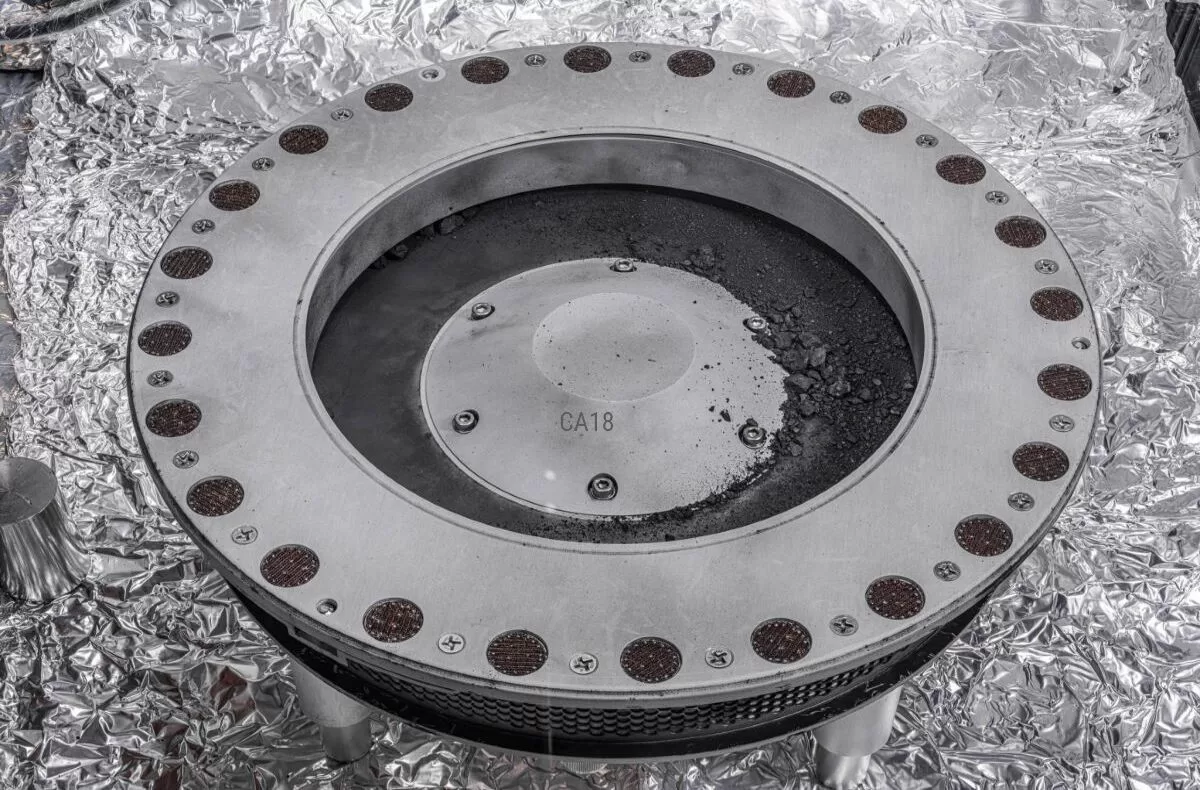NASA’s first asteroid samples are from the carbon-rich asteroid Bennu, which is almost 60 million miles away. The samples are ancient black dust and chunks. They were collected by NASA’s Osiris-Rex spacecraft three years ago and dropped off in a sealed capsule during a flyby of Earth last month.
The samples landed in the Utah desert after a seven-year journey. The samples are rich in carbon and water. They could help scientists understand how the solar system formed and how life started on Earth. The samples also offer more evidence for the theory that life on Earth was seeded from outer space.
Scientists will continue to “characterize” the samples for the next two years. At least 70% of them will remain at JSC for further research by experts from the US and worldwide. Additional samples will be loaned to the:
- Smithsonian Institution
- Space Center Houston
- University of Arizona
The samples are only the third sample of an asteroid ever returned. “Boy, did we really nail it,” said Dante Lauretta, a scientist from the University of Arizona who is the principal investigator of the OSIRIS-REx mission.
Scientists have not even opened the main container yet, a process that will unfold in the coming weeks as cataloging all of this material begins. Before the launch of this mission, scientists said the recovery of 60 grams of material would be considered a success. While the effort to determine the overall mass is ongoing, Lauretta said early estimates are that the asteroid capture mission collected about 250 grams of pebbles and dust from the surface of Bennu.
After the material is cataloged, it will be loaned out in small quantities to 230 scientists across 35 countries who are members of the Origins, Spectral Interpretation, Resource Identification and Security-Regolith Explorer, or OSIRIS-Rex mission team.
So what’s the big deal about recovering pristine samples from the surface of an asteroid? The big deal is that Bennu, an asteroid in a near-Earth orbit that is about one-half kilometer across, is believed to be a time capsule for the types of rocks and chemicals that existed when the planets formed in our Solar System more than 4 billion years ago. By studying Bennu, scientists are looking back to that primordial era when Earth began transitioning from an extremely hot world with a hellish surface environment into something more like a mud ball.
Poking these pebbles and rocks with sophisticated equipment here on Earth may allow Lauretta and the other scientists to answer questions about how terrestrial planets like Earth and Mars formed and possibly whether asteroids seeded Earth with the building blocks for life.
In a preliminary analysis of some of the dust, Lauretta said scientists hit the jackpot with a sample that is nearly 5 percent carbon by mass and has abundant water in the form of hydrated clay minerals. It is highly plausible that asteroids like this delivered the vast majority of the water now found in Earth’s oceans, lakes, and rivers billions of years ago.
By piecing together clues from the asteroid dust—both its water and organic molecules—the scientists believe they may better understand how Earth went from an uninhabited mudball to the world teeming with life today.
“This is incredible material,” said Daniel Glavin, a co-investigator on the mission. “It’s loaded with organics. If we’re looking for biologically essential organic molecules, we picked the right asteroid, and we brought back the right sample. This is an astrobiologist’s dream.”
“Why are we doing this?” the NASA Administrator, Bill Nelson, asked rhetorically on Wednesday. “Because at NASA, we are trying to find out who we are, what we are, where we came from, what our place is in this vastness we call the Universe.”
This is not the first mission to return samples from an asteroid. The Japanese space agency has led in this area. Its small Hayabusa 1 spacecraft returned 1,500 tiny asteroid grains to Earth in 2010, and a decade later, the Hayabusa 2 spacecraft returned more, about 5 grams, to Earth.
But the material from OSIRIS-Rex is many times more plentiful, and with larger rocks embedded within the sample, will likely provide more meaningful scientific data. The wonder of OSIRIS-Rex is that we still don’t know what we’re going to find, but we are at the tantalizing moment of inquiry when we can be sure that we’re going to be dazzled by those discoveries in the coming months and years.
What I find most inspiring about big science missions like this is that they show what humanity, at its best, can be. It takes broad international cooperation, and a coming together of people from many different backgrounds and specialties, to do something that individuals cannot do alone—reaching far beyond the cradle of our civilization to find out something new about our cosmos, our world, and ourselves.


